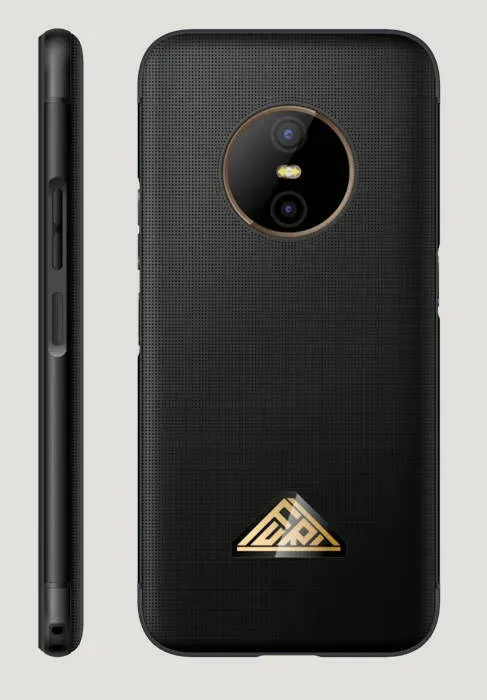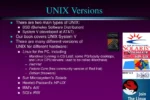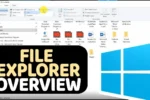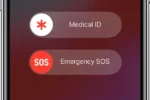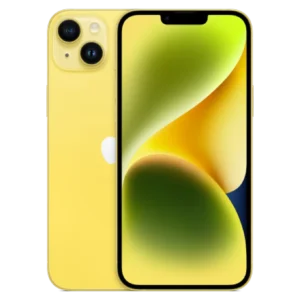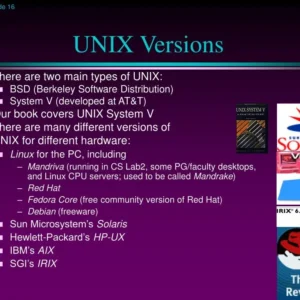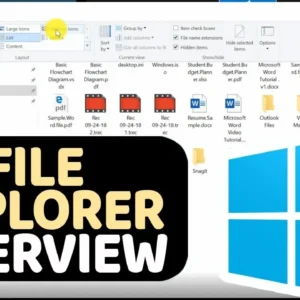Introducing the FLX1 smartphone, a revolutionary device from FuriLab that brings the power of Debian right to your pocket. This Linux smartphone leverages the robust capabilities of GNOME applications, ensuring a seamless and efficient user experience for tech enthusiasts and everyday users alike. With its commitment to free and open-source software (FOSS) principles, the FLX1 stands out as a unique offering in the crowded smartphone market. Designed to meet the demands of modern users, it combines high-end specifications with a user-friendly interface, making it an ideal choice for those seeking an alternative to traditional Android devices. Embrace the future of mobile technology with the FLX1 and explore the possibilities of a Debian smartphone that truly empowers its users.
The FLX1 smartphone, crafted by FuriLab, represents a significant advancement in mobile technology, especially for those who appreciate the freedom of open-source software. This device operates on a Debian-based platform, allowing users to run various GNOME applications effortlessly. As a Linux smartphone, it caters to a niche but growing audience that values the principles of FOSS mobile solutions over conventional Android offerings. By harnessing the power of a robust operating system, the FLX1 elevates the user experience, making it a worthy contender among other innovative smartphones in the market. In a world where privacy and control are paramount, the FLX1 serves as a beacon for users seeking a more liberated mobile experience.
Introducing the FLX1 Smartphone
The FLX1 smartphone, developed by FuriLab, is a groundbreaking device that incorporates Debian as its operating system, making it a unique addition to the landscape of mobile devices. This smartphone is designed to provide a user-friendly experience while harnessing the power of GNOME applications, enabling users to access their favorite tools and services directly from their pocket. The integration of FOSS principles ensures that users have control over their device, promoting privacy and customization.
What sets the FLX1 apart from conventional smartphones is its deployment of the Phosh shell, which delivers an intuitive interface tailored for touch navigation. Users can seamlessly engage with their applications, whether they are browsing the internet using Mozilla Firefox or managing their contacts with GNOME Contacts. The FLX1 represents a significant shift towards open-source mobile technology, appealing to tech enthusiasts and users who prioritize freedom and transparency in their devices.
The Advantages of a Debian-based Smartphone
Debian-based smartphones like the FLX1 offer several advantages over traditional Android devices. One of the most notable benefits is the ease of system updates. With a simple command in the terminal, users can keep their operating system up to date, ensuring they have the latest features and security patches. This is a stark contrast to many Android devices, which often suffer from lengthy update cycles or complete abandonment after the initial purchase.
Moreover, the open-source nature of the FLX1’s operating system, FuriOS, allows developers and users to contribute to its evolution actively. This collaborative approach fosters a community-driven environment that encourages innovation and the rapid resolution of issues. Unlike proprietary systems, users of the FLX1 can customize their experience, leading to a smartphone that can adapt to individual needs and preferences.
Exploring FOSS Mobile with the FLX1
The FLX1 is not just another smartphone; it represents the forefront of the FOSS mobile movement. By utilizing free and open-source software, the FLX1 empowers users to take control of their digital lives. The availability of GNOME applications on this device further enhances its usability, providing a familiar environment for those accustomed to Linux desktops. Users can explore a wide range of applications, from productivity tools to entertainment options, all while maintaining the ethos of open-source.
The integration of FOSS principles into the FLX1 also promotes greater transparency in how the device operates. Users can review the source code of the applications they use, ensuring no hidden agendas or data collection practices that often plague mainstream smartphones. This focus on privacy and user agency makes the FLX1 a compelling choice for those seeking a mobile experience that aligns with their values.
User Experience and Interface of the FLX1
The user experience on the FLX1 is primarily defined by its use of the Phosh interface, which is designed specifically for mobile devices running GNOME. This interface provides a clean and organized layout, making it easy for users to navigate their applications and settings. However, it is worth noting that there are some inconsistencies in gesture controls that users might find puzzling, particularly when moving between different applications.
Despite these minor quirks, the overall experience is fluid and intuitive, allowing users to quickly access their favorite GNOME applications. The ability to create folders and organize apps helps reduce clutter on the home screen, although the limitations of the favorites bar can be a drawback for users with extensive app collections. Overall, the FLX1 offers a unique mobile experience that embodies the spirit of Linux while also catering to the needs of modern smartphone users.
Hardware Specifications of the FLX1
The FLX1 smartphone boasts impressive hardware specifications that cater to both performance and usability. With a large 6.6-inch IPS LCD display featuring a resolution of 1080 x 2412 pixels, users can enjoy vibrant visuals and a smooth experience thanks to the 120 Hz refresh rate. The device is powered by a MediaTek Dimensity 900 SoC, complemented by 6 GB of RAM and 128 GB of storage, ensuring that it can handle demanding applications and multitasking with ease.
Additionally, the FLX1 includes essential features such as a replaceable 5,000 mAh battery, providing users with the convenience of extended usage without the hassle of a fixed battery. The inclusion of a headphone jack is another welcome feature, especially for audiophiles who prefer wired audio. Despite being slightly bulkier than some contemporary smartphones, the FLX1’s robust build quality and practical design make it a reliable companion for everyday use.
Connectivity Features of the FLX1
Connectivity options on the FLX1 smartphone are comprehensive, catering to a variety of user needs. Supporting everything from 2G to 5G networks, the device ensures that users can stay connected regardless of their location. Additionally, with Bluetooth 5.2 and Wi-Fi capabilities spanning multiple standards, such as 802.11 A, B, G, N, and AC, the FLX1 is well-equipped for modern wireless communication.
Incorporating a range of sensors, including a compass, enhances the functionality of the FLX1, making it suitable for navigation and location-based services. This level of connectivity, combined with the device’s open-source software ecosystem, positions the FLX1 as a versatile tool for both casual users and tech enthusiasts who require flexibility in their mobile experience.
The Role of GNOME Applications on the FLX1
GNOME applications play a crucial role in shaping the FLX1’s user experience. With a suite of pre-installed applications such as Calendar, Contacts, and Maps, users can engage in a wide range of activities right out of the box. These lightweight applications are optimized for mobile use, allowing them to function smoothly on the FLX1’s hardware.
Moreover, the availability of GNOME applications means that users can easily find familiar tools that enhance productivity and communication. As the ecosystem continues to grow, the FLX1 stands to benefit from future developments and improvements within the GNOME community, ensuring that the device will remain relevant as new software becomes available.
Challenges and Limitations of the FLX1
While the FLX1 is an impressive device, it is not without its challenges. Users may encounter some inconsistencies in the user interface, particularly regarding navigation gestures and the interaction between Linux and Android applications. These issues may frustrate some users who are accustomed to the seamless experience provided by traditional smartphones.
Additionally, the lack of certain features, such as swipe typing on the on-screen keyboard and limited customization options, can hinder the user experience for those who rely on these functionalities. However, many Linux and FOSS enthusiasts view these limitations as part of the trade-off for the freedom and control that the FLX1 offers, making it a worthwhile investment for those committed to the open-source philosophy.
Future Prospects for the FLX1 and FOSS Mobile
The FLX1 smartphone represents a significant step forward in the evolution of FOSS mobile technology. As more users become aware of the benefits of open-source software, devices like the FLX1 are likely to gain traction among tech enthusiasts and privacy-conscious individuals. FuriLab’s commitment to regular updates and community engagement ensures that the FLX1 will continue to improve over time, addressing user concerns and expanding its capabilities.
Looking ahead, the potential for FOSS mobile devices to disrupt the conventional smartphone market is promising. As developers continue to innovate and create new applications for the GNOME environment, the FLX1 could serve as a template for future devices that prioritize user control, privacy, and customization. The ongoing support from the FOSS community will be vital in shaping the future of the FLX1 and similar devices, paving the way for a new era of mobile technology.
Frequently Asked Questions
What is the FLX1 smartphone and how does it differ from other Linux smartphones?
The FLX1 smartphone, developed by FuriLab, is a high-end Debian-based device that runs on the GNOME desktop environment, utilizing the Phosh shell. Unlike other Linux smartphones, the FLX1 offers seamless OS updates via terminal commands or GNOME Software, ensuring users stay current with the latest features and security patches.
Can I run GNOME applications on the FLX1 smartphone?
Yes, the FLX1 smartphone allows users to run GNOME applications directly, providing a familiar user experience for those accustomed to the GNOME desktop environment. This integration enhances functionality and usability, making it an appealing choice for FOSS mobile enthusiasts.
Is the FLX1 smartphone a good choice for FOSS mobile users?
Absolutely! The FLX1 smartphone is designed for FOSS mobile users, featuring a fully open-source operating system called FuriOS, which is based on Debian. This means users can enjoy a high degree of customization, privacy, and control over their device compared to traditional Android smartphones.
How do I update my FLX1 smartphone?
Updating your FLX1 smartphone is straightforward. Users can simply open a terminal and enter the command `sudo apt update && sudo apt full-upgrade -y` to perform updates. Alternatively, for those less comfortable with the terminal, updates can be managed through the GNOME Software application by clicking the Refresh button under the Updates tab.
What are the key specifications of the FLX1 smartphone?
The FLX1 smartphone features a MediaTek Dimensity 900 SoC, 6 GB of RAM, and 128 GB of storage. It has a 6.6-inch IPS LCD display with a resolution of 1080 x 2412 pixels and a 120 Hz refresh rate, along with a 56 MP rear camera and a 2 MP macro camera. Additionally, it offers a replaceable battery and a headphone jack, making it a robust choice for users.
Can I install Android applications on the FLX1 smartphone?
Yes, the FLX1 smartphone supports running Android applications alongside Linux apps. Users can access a limited selection of FOSS Android apps through the F-Droid app store and install additional applications via the Aurora app store or Amazon Appstore, enhancing the device’s versatility.
What makes the FLX1 smartphone an appealing choice for developers?
The FLX1 smartphone is particularly appealing for developers due to its open-source nature and unlocked bootloader. This allows for experimentation with various operating systems, including potential installations of postmarketOS or Plasma Mobile, providing a platform for innovation and customization.
How does the FLX1 smartphone handle connectivity?
The FLX1 smartphone offers excellent connectivity options, supporting 2G to 5G networks, Bluetooth 5.2, and Wi-Fi standards (802.11 A, B, G, N, AC). This ensures users can stay connected in various environments, making it suitable for both personal and professional use.
What are the limitations of the FLX1 smartphone’s user interface?
While the FLX1 smartphone provides a unique GNOME-based user interface, it has some limitations, such as inconsistent navigation gestures and limited customization options. For instance, the on-screen keyboard lacks swipe typing support, which may be a drawback for some users accustomed to that input method.
Is the FLX1 smartphone suitable for everyday use?
Yes, the FLX1 smartphone is suitable for everyday use, especially for users who prioritize open-source software and Linux capabilities. Its robust hardware, user-friendly GNOME applications, and ability to run Android apps make it a practical choice for daily tasks.
| Feature | Details |
|---|---|
| Operating System | FuriOS, based on Debian testing, uses GNOME applications with a user-friendly interface. |
| Display | 6.6 inches IPS LCD, 1080 x 2412 pixels, 120 Hz refresh rate. |
| Processor | MediaTek Dimensity 900 SoC with 6 GB of RAM. |
| Camera | 56 MP rear camera and 16 MP selfie camera. |
| Battery | 5,000 mAh, user-replaceable. |
| Connectivity | Supports 2G to 5G, Bluetooth 5.2, and various Wi-Fi standards. |
| Software Upgrades | Regular monthly updates via terminal or GNOME Software. |
| Unique Features | Headphone jack, robust build, IP68 compliance. |
Summary
The FLX1 smartphone from FuriLabs is a groundbreaking device that combines the flexibility of Linux with the convenience of a mobile form factor. It stands out as a capable and resilient choice for tech enthusiasts looking for a device that runs on a Debian-based operating system while providing seamless access to GNOME applications. With its robust hardware, user-replaceable battery, and regular software updates, the FLX1 smartphone offers an appealing alternative to traditional Android devices, fostering an open-source ecosystem that emphasizes user control and privacy.

